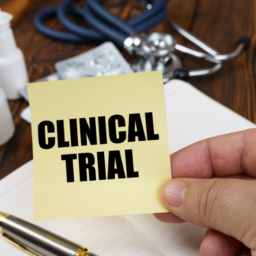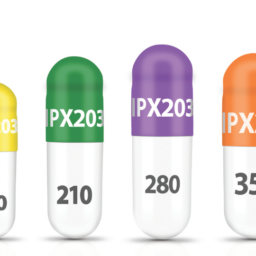Multiple conditions look like Parkinson’s. Some of these conditions are referred to as atypical parkinsonisms or Parkinson’s-plus syndromes. Progressive supranuclear palsy (PSP) is often considered an atypical parkinsonism.
Like Parkinson’s, PSP is progressive; unfortunately, no treatments have proven to slow its progression. The median survival rate is typically less than ten years. A 2022 study found that the average age of diagnosis is 72.
One fundamental difference between PSP and Parkinson’s is PSP is associated with abnormal function of the protein tau, while Parkinson’s is related to abnormal function of alpha-synuclein. In both conditions, the abnormal proteins spread and damage parts of the brain. Where and how these proteins accumulate contributes to what symptoms you experience and the symptoms’ severity. These differences in pathology and clinical presentation have caused some researchers to reconsider the designation of PSP as an atypical parkinsonism.
Diagnosis and Symptoms of PSP
The spectrum of PSP is complex, and as with Parkinson’s, diagnosis is made by a health professional’s clinical observation of symptoms. These factors contribute to frequent misdiagnoses. A 2003 study found that out of 180 people diagnosed with PSP, after an autopsy, 24% were found to have a different neurological condition. This is crucial to remember, especially in light of the abovementioned survival rate.
Also, because PSP is progressive, symptoms sometimes suggest PSP when symptoms emerge. It can take multiple years for a provider to establish confidence in a diagnosis, and an autopsy is still considered the surest way to confirm a diagnosis.
Diagnostic tests that may help clarify a PSP diagnosis include:
- MRI, which can find possible structural causes to explain symptoms
- Lumbar puncture, which can help differentiate between PSP and Alzheimer’s
- Blood or urine tests to help distinguish between PSP and other conditions like Wilson’s disease
- The Syn-One Test® and Syn-Tap Test® help differentiate between PSP and different types of parkinsonism
Symptoms of PSP
In 2017, the Movement Disorder Society (MDS) produced a study that generated criteria for PSP diagnosis.
The authors of the study note that the cardinal symptoms of PSP–which may only become clear three to four years after symptom onset–include:
- Ocular motor dysfunction: Relevant dysfunction includes supranuclear gaze palsy, which is an inability to look in particular directions voluntarily and to open eyes after voluntarily closing them.
- Postural instability: Relevant signs include repeated unprovoked falls within three years of symptom onset, repeated falls during the pull test, or taking more than two steps backward on the pull test within three years of symptom onset.
- Akinesia and rigidity: Specific examples of akinesia include freezing of gait within three years of symptom onset, especially when not accompanied by limb rigidity, tremor, or dementia. Rigidity has axial rigidity, often of the neck.
- Cognitive dysfunction: Relevant signs of PSP-associated cognitive dysfunction include apathy, slowed thinking, impulsivity, corticobasal syndrome, and reduced fluency.
Other SYMPTOMS of PSP include:
- Poor levodopa response
- Slowed or quiet speech and harsh voice
- Difficulty swallowing
- Other vision-related issues, including irregular, rapid eye movements when shifting focus
- Surprised or frightened facial expression caused by rigidity
- Dizziness
Variants of PSP
In addition to publishing criteria for PSP diagnosis in 2017, Lancet Neurology published an article describing multiple PSP variants and their differences. These variants include:
PSP-RS (Richardson Syndrome)
PSP-RS is the first variant identified and documented in the original diagnosis guidelines established in 1996 by the National Institute for Neurological Disorders and Stroke.
At the time of their diagnosis, people living with PSP-RS often experience unexplained falls, unsteady gait, bradykinesia, subtle personality changes, cognitive slowing, difficulty planning or multitasking, speech and swallowing dysfunction, and impaired ocular movement. Difficulty or inability to look up or down is a key diagnostic feature of PSP-RS, but it often only appears three or four years after symptoms begin. Early in PSP’s course, difficulty looking up or down may present as a slower speed and a smaller range of eye movements.
Over time, most PSP variants will feature some or all the typical clinical features of PSP-RS.
PSP-Parkinsonism
People living with PSP-Parkinsonism (PSP-P) often experience early symptoms similar to Parkinson’s. There is typically a moderate response to levodopa and a slower progression than PSP-RS. One difference between PSP-P and Parkinson’s is that dyskinesia, autonomic symptoms, and visual hallucinations are much less common in advanced PSP-P than in advanced Parkinson’s.
PSP with Progressive Gait Freezing
The primary sign of PSP with progressive gait freezing (PSP-PGF) is gait disturbance that develops and progresses years before other signs of PSP-RS. The gait disturbances of PSP-PGF occur without tremor, rigidity, dementia, or eye movement abnormality within five years of symptom onset. This clinical presentation is among the most certain to correspond to PSP pathology found at autopsy.
PSP with Frontal Presentation
The PSP with frontal presentation variant (PSP-F) features behavioral signs of frontotemporal dementia years before the presentation of motor signs of PSP. Although PSP-F is rare, behavioral signs of PSP-F include “early and progressive deterioration of personality, social comportment, behavior, and cognition.”
PSP-Speech Language
The PSP-Speech Language (PSP-SL) variant features prominent early speech and language deficits that develop before motor features or PSP.
PSP with Predominant Cerebellar Ataxia
The PSP with a prominent cerebellar ataxia variant is difficult to differentiate from MSA but differs from MSA due to the relatively lower severity of autonomic symptoms than MSA. It is difficult to distinguish between the two cerebellar ataxia clinically with predominance; this variant does not appear in the MDS criteria for PSP diagnosis.
Treatments for PSP
In 2021, experts released a consensus on best practices for managing PSP symptoms.
For Parkinsonian symptoms like bradykinesia, rigidity, and tremor, 20-40% of people with PSP may respond well to levodopa. Other dopaminergic agents have shown minimal or no benefit for people with PSP in clinical trials. There are conflicting trial results regarding the benefits of Coenzyme Q-10 on Parkinsonian symptoms of PSP. A small, short study found a benefit; a more significant, more extended trial showed less positive results. Deep brain stimulation (DBS) has shown limited benefit and is only sometimes performed outside clinical trial settings.
Amantadine, coenzyme Q-10, and physical therapy can help manage gait dysfunction. In a 2016 study, rasagiline also showed a “potential beneficial effect” for “limb motor” function, and authors of the 2021 consensus observed that rasagiline “may improve freezing of gait in PSP.” Interventions addressing visual impairment can help manage gait dysfunction. Still, many people use assistive devices for gait dysfunction and postural instability over time. Weighted walkers are recommended over a cane to avoid the risk of tripping or falling forward over it and because of the hand, foot, and eye coordination required to use a cane safely.
For rigidity and dystonia, Botox is often the most effective treatment, but there are oral medications that may help, too. Evidence is anecdotal for oral medications for dystonia, as clinical trials have not been performed.
For visual symptoms, certain drops help with discomfort, devices help manage some symptoms, and there are environmental modifications an occupational therapist can help you implement. Botox may be helpful for issues related to opening and closing your eyes.
PSP includes many other symptoms: digestive, urinary, and sleep-related symptoms like those associated with Parkinson’s. The 2021 consensus statement provides information about these symptoms, as well.
Living Well With PSP
PSP often progresses quickly, and the common symptoms often significantly impact the quality of life, but you can live well by acting today.
Improve your quality of life by considering the following:
- Seek care from a CurePSP Center of Care.
- Prioritize palliative care. Palliative care is more than hospice care. Neuro-palliative care specialists work to provide whole-person support while you are living and thriving with PSP.
- Work with an occupational therapist to develop strategies to improve the safety of your home and your ability to contribute to activities of daily living.
- Participate in a clinical trial if you are able. You will likely have more time with expert care providers, and many people who participate in trials report an increased sense of well-being from having contributed to improving their understanding of PSP and advancing new treatment strategies. Clinicaltrials.gov is the most comprehensive search resource, but the Fox Trial Finder allows you to search for PSP trials, too.
- Support the well-being of your care partners.
The most important thing you can do to live well is to seek solace in others. Social isolation is associated with worsened quality of life, so prioritize your relationships, find a PSP-specific support group through the organizations listed below, and connect with our Living with Parkinson’s Meetup–people living with Parkinson’s and PSP face many of the same issues, and we are here for you.
Additional Resources
Interview with Dr. Bluett About Treatments for PSP
National Organization for Rare Disorders
The Differential Diagnosis of Parkinson’s
WANT MORE PRACTICAL Resources LIKE THIS?
You can learn much more about living well with Parkinson’s today through our Every Victory Counts® suite of resources. Each manual is packed with up-to-date information about everything Parkinson’s. Click the link below to order your manual(s).
Thank you to our 2023 Peak Partners, AbbVie, Amneal, and Kyowa Kirin, and our Every Victory Counts Gold Sponsor, AbbVie Grants, for their ongoing support of these must-have manuals. Additionally, we’d like to thank Barbara and Dale Ankenman, Abby and Ken Dawkins, Bonnie Gibbons, Gail Gitin in loving memory of Gene Gitin, Irwin Narter, and Lorraine and J Wilson for their generous donations that allow us to make these resources available and free to all.

















